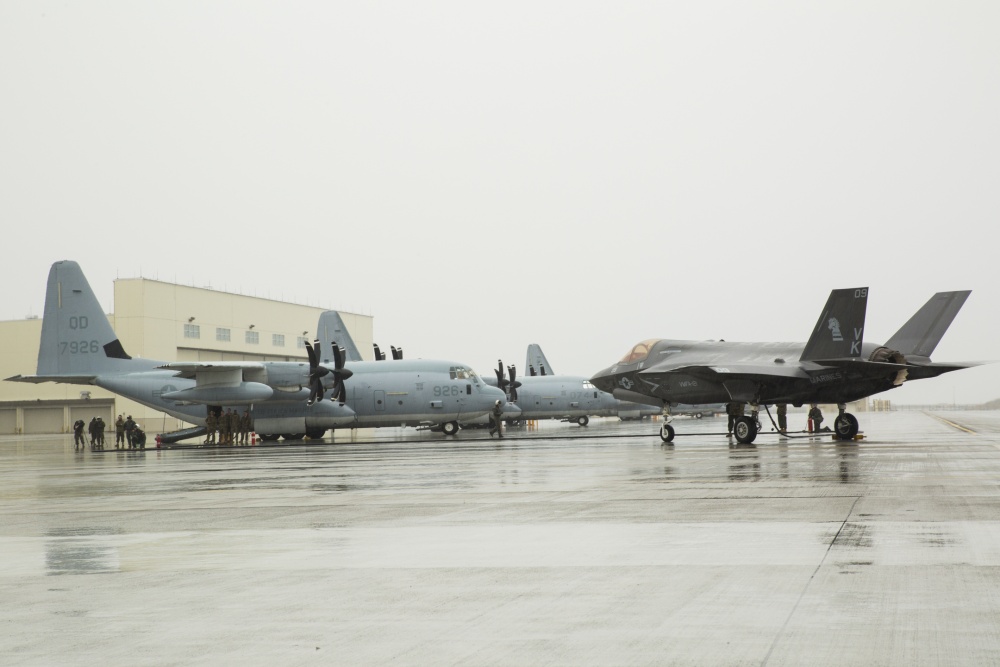U.S. Marines conducted aviation delivered ground refueling for VMFA-121’s F-35B Lightning II aircraft in Japan
Posted on
U.S. Marines with Marine Aerial Refueler Transport Squadron (VMGR) 152 conducted aviation delivered ground refueling with Marine Fighter Attack Squadron (VMFA) 121 at Marine Corps Air Station Iwakuni, Japan, April 11, 2017.
That was reported by Lance Cpl. Joseph Abrego (Marine Corps Air Station Iwakuni).
The ADGR marked the first evolution of this form of refueling for VMFA-121’s F-35B Lightning II aircraft.
The purpose of the training was to establish flow rates of fuel in gallons per minute distributed to the F-35B Lightning II aircraft by KC-130J Hercules, to see how fast the process would be if used in a real-world scenario.
“It felt great to be a part of today’s refueling, it was surreal,” said U.S. Marine Corps Lance Cpl. Keon Willingham, a powerline mechanic with VMFA-121. “Being able to participate in the first ADGR with the F-35 is something I can look back on and be eager to tell stories about.”
Successfully completing the aviation delivered ground refueling is a landmark that increases the capabilities of the squadron, offering the ability to refuel by C-130 aircraft in austere locations when other resources aren’t available.
Despite reaching a milestone in aviation, the training offered more than memories.
“I’m going to take away how multi-face this operation was,” said U.S. Marine Corps Cpl. Matthew Schoon, ordnance technician with VMFA-121. “We had to deal with different components from the pilot in a running F-35, to a running KC-130 and Marines from VMGR 152. There was a lot of communication, and I had to keep my head on a swivel the whole time. That’s something I’ll be able to apply in any situation.”
The Marines with both squadrons faced issues with the climate but didn’t let it stop them from accomplishing their tasks.
“The weather played a big factor in the training today with safety, visibility and communication,” said Schoon. “Training with the engines on the aircraft still running made it very hard to hear so we had to use hand signals. The rain made visibility with eye protection on difficult, so we had to ensure we were being thorough and making safety a priority.”
VMFA-121 used the ADGR on the air station as a stepping stone to prepare for real-time refueling in remote locations.
“Completing this training is a huge confidence boost for us,” said Willingham. “Being the first to successfully complete this training and being able to do so safely, gives everyone involved the state of mind that they can accomplish anything. We will continue to train, and we will improve anywhere we can.”


Subscribe to our newsletter
Promotions, new products and sales. Directly to your inbox.
